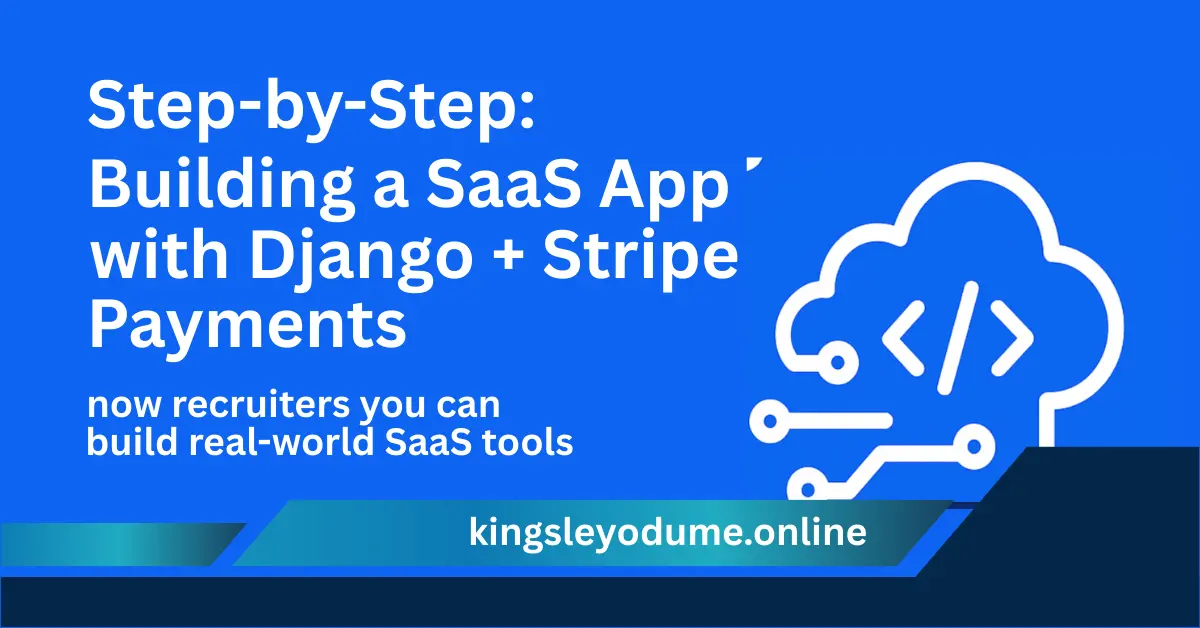One of the most effective ways to show recruiters you can build real-world applications is to demonstrate a Software as a Service (SaaS) app with secure billing.
Why? Because SaaS is the backbone of modern startups in the US. Recruiters and hiring managers want developers who not only code features but also understand subscription models, payments, and scalability.
In this post, I’ll share how I build a SaaS app with Django and Stripe Payments, step by step.
Step 1: Setting Up Django
I begin by creating a clean Django project structure:
Key best practices here:
- Use virtual environments (
venv or Poetry). - Configure environment variables for SECRET_KEY and API keys.
- Use PostgreSQL instead of SQLite for production readiness.
Step 2: Designing the User Model
Every SaaS app needs user authentication. Django makes this easier with a custom user model:
This allows me to track subscriptions tied to Stripe.
Step 3: Installing & Configuring Stripe
Install Stripe SDK:
In settings.py, add:
Step 4: Creating a Checkout Session
Here’s a simple Stripe checkout integration:
Recruiters love to see Stripe integration because it signals you can build revenue-ready apps.
Step 5: Handling Webhooks (Subscription Events)
Stripe uses webhooks to notify apps of billing events. For example, updating a user’s subscription:
Step 6: Deploying & Scaling
To make it recruiter-ready, I always:
- Use Docker + Gunicorn + Nginx for production.
- Deploy to Heroku, AWS, or DigitalOcean.
- Add monitoring (Sentry, New Relic) for performance.
Recruiter Takeaway
By building a SaaS app with Django + Stripe, I show that I:
- Understand subscription models (critical for US startups).
- Can handle secure payment integrations.
- Build apps that are deployable and scalable in production.
Conclusion
Building SaaS apps isn’t just about coding—it’s about understanding business models. With Django and Stripe, I’ve developed projects that prove I can help startups and enterprises go from idea → product → revenue.
If you’re a recruiter or founder looking for a Python/Django developer who can build scalable SaaS apps, feel free to connect with me via my Portfolio Website or GitHub .




